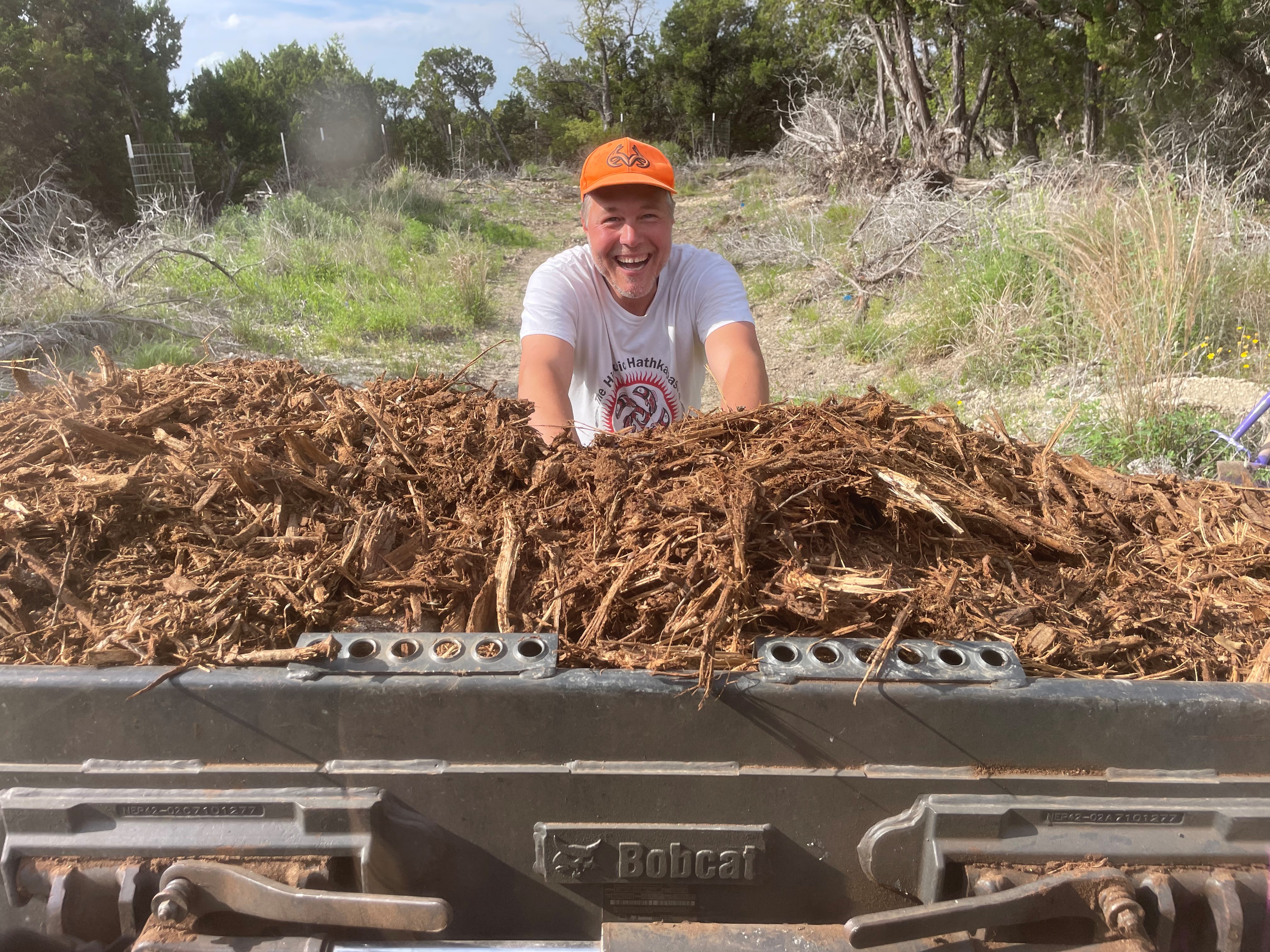
Bryan Hummel is a big-time water nerd. Specializing in nature-based solutions to watershed and land management issues, he has brought his expertise to the US Environmental Protection Agency, the US Air Force, industry, and agriculture. The key to preventing flooding, he says, is to restore degraded land so that the soil becomes like a sponge, absorbing water and recharging subterranean aquifers––and in the process preventing flooding and contributing to the success of farming and ranching businesses, which thrive with abundant water resources. His techniques include beaver and bison biomimicry and permaculture techniques that slow, spread, and sink water into the soil instead of letting it run off.
TIMELINE
4’01 heartbreak over what happened in the Texas Hill Country
4’52 living in “flash flood alley”
5’11 the “sponge” that is healthy soil
5’59 Texas was a lush grassland, but it was overgrazed by European settlers
6’44 people removed all the cypress trees for roof shingles, further degrading the water cycle
7’44 how you keep water in the landscape, starting at home and in your neighborhood
9’30 water has only three places to go: run off, infiltrate, evaporate
9’55 what Texas aquifers are like
10’57 Central Texas has clear water and beautiful rivers that are the economic engine of many communities
12’32 beaver and bison biomimicry
13’47 beavers and bison as keystone species
14’12 “ecological amnesia”
15’19 rebuilding soil through rotational grazing, which is bison biomimicry
17’24 a slight reduction in water intensity makes a big difference in averting disaster
20’12 slowing down water and letting it sink into the ground is like putting money in the bank, it’s a form of wealth
21’05 if we want to have a secure water supply we have to do good land managment practices
21’34 we do not have a flooding problem, we have an infiltration problem, and there are profitable ways to solve this problem
22’18 David Bamberger was a mentor for Bryan, he restored some of the most degraded land in Texas; he slowed down water with rock berms and brush to slow spread sink soak and store water in the ground
24’00 Bill Neiman with Native American Seed, and the importance of re-seeding with native plants
24’47 Book: Your Remarkable Riparian, from the Nueces River Authority
25’19 makes more sense to teach food producers to restore land than to do continual disaster management
25’46 plants need sunlight, CO2, rain, and soil. The first two are always there. The last two can be managed by keeping soil and water on the landscape
26’15 keeping animals on the land and growing more local food
26’50 the drought-wildfire-flood cycle
27’16 the importance of leaving debris in the river and letting trees stand after wildfires
28’02 the width that the river got during this flood is the new river, and it needs to heal itself
28’26 plant native seeds in the flooded riparian zones
29’11 if you haul away organic debris from the river, the next flood will be worse
30’20 Bryan’s work on Camp Bullis in Texas: prevented the bulldozing and clearing of the land and instead did beaver biomimicry, made flood “speedbumps”
32’25 they brought the water table up so high that springs flowed that had never been seen before–and they prevented flooding
33’41 how these principles work in wet areas of the world
34’32 these nature-based systems work everywhere on the planet, not just in dry zones
34’40 Russell Hedrick, North Carolina farmer who has had tremendous success through soil health practices
35’08 Hedrick showed that you don’t need chemicals to be a successful farmer
35’19 Article: “The Dollars and Cents of Soil Health”
35’53 how he did soil health improvement and got much better yields
37’26 Hedrick’s grain as part of the bourbon industry
38’02 agricultural chemicals make the soil less of a sponge
38’33 Gabe Brown, Allen Williams, Nicole Masters, Christine Jones, Rick Clark of Farm Green in Indiana are restoring soil, and going from two inches to twenty of infiltration an hour
39’28 Bill Zeedyk, Brad Lancaster, Zach Weiss—all watershed restoration experts
40’40 Water Is Life
41’35 Native American Earthworks dug 2000 years ago, which just won UNESCO World Heritage Status
42’24 changing the way we think about engineering
42’54 changing engineering toward nature-based solutions–even the Army Corps of Engineer is changing
43’20 Dr. Todd Bridges and Dr. Jeff King are changing way the Army Corps works
44’20 if you want to stop flooding you have to look upstream from where the flood takes place
44’51 flood in San Antonio and Bryan entering the news cycle



Subscribe:
Apple Podcasts
Spotify